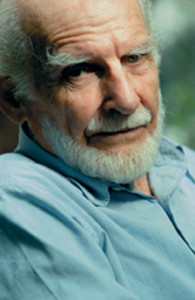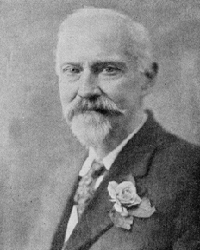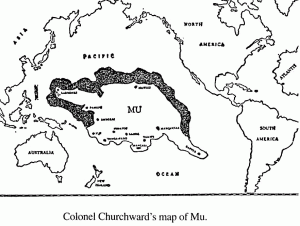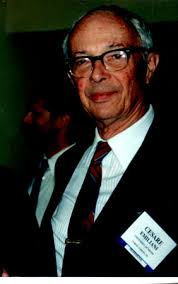Peter Tompkins
Tompkins, Peter
 Peter Tompkins (1919-2007) was an American journalist, WWII spy and perhaps best known as the author of the 1971 book, Secrets of the Great Pyramid[783] which included an extensive appendix by Livio Catullo Stecchini on the relationship of Ancient Measures to the Great Pyramid.
Peter Tompkins (1919-2007) was an American journalist, WWII spy and perhaps best known as the author of the 1971 book, Secrets of the Great Pyramid[783] which included an extensive appendix by Livio Catullo Stecchini on the relationship of Ancient Measures to the Great Pyramid.
Tompkins also wrote Mysteries of the Mexican Pyramids as well as over a score of other books on various ‘fringe’ subjects as well as his wartime exploits. He was interested in the mystery of Atlantis and to that end, he went to the Bahamas to study the ‘Bimini Road’ but concluded that it was only beach rock.
A later interview with Tompkins son, Ptolemy, revealed that his “dad was convinced that the Edgar Cayce readings about the rising of Atlantis were correct. He spent thousands and thousands of dollars photographing the limestone formations off Bimini – the so-called “Bimini Road.” My father loved the idea of Atlantis returning because he wanted the world to become a kind of new Eden. He was a true father of the New Age in this sense – he had the core New Age belief that the world once was, and would be again a better place. But not better in some mundane sense, but in the sense of being elevated back into a spiritualised condition that it had fallen away from. That’s what the Bimini stuff was all about” (a). Apparently, Tompkins left Bimini unconvinced that it had Atlantean credentials.
Tompkins wrote the foreword to the English translation of Otto Muck’s book, The Secret of Atlantis [0098] and was impressed by Muck’s hypothesis of Atlantis in the Atlantic being destroyed by an asteroid and considered the work of Cesare Emiliani important in support of this contention.
>In the Preface to John Anthony West’s Serpent in the Sky [452], Tompkins wrote that “interestingly, West develops de Lubicz‘ notion that the Egyptian cosmology and understanding of this universe was not endemic to Egypt but came from colonists or refugees from Plato’s sunken continent of Atlantis, which could also explain the similarities and identities with the cosmologies of Central America, presumably brought there by other refugees from Atlantis”!<
Stecchini, Livio Catullo
Livio Catullo Stecchini (1913-1979) was an Italian science historian with a special interest in ancient metrology and cartography. In an unpublished work called Sahara, he advocated São Tomé, in the Gulf of Guinea, as the location of Atlantis. He further claims that the myth of the Argonauts concerns their travels along the vast river systems that once existed across the Sahara, now represented by dried-up watercourses such as Wadi Igharghar and Wadi Tafanasset.
Stecchini was of the opinion that the metric system introduced in the 18th century by the French was almost identical to that used in Mesopotamia in the 3rd millennium BC.
Stecchini also wrote an extensive appendix for Peter Tompkins’ Secrets of the Great Pyramid[783] on the relationship of ancient measures to the Great Pyramid.
His radical views eventually led this respected academic to be shunned by his peers.
A site dedicated to his work is available on the Internet(a).
>Stecchini was an important contributor to a special edition of American Behavioral Scientist dedicated to the work of Immanuel Velikovsky in September 1963. This was later expanded into The Velikovsky Affair [1172] by Alfred De Grazia.(b)<
(a) https://web.archive.org/web/20191231054446/http://www.metrum.org/index.htm
Churchward, ‘Colonel’ James
 ‘Colonel’ James Churchward (1851-1936) was a British engineer and patent holder. However, his most famous invention was ‘the land of Mu‘, an imaginary counterpart of Atlantis, supposedly situated in the Pacific. He wrote six books [0233]+[0234]+[1215]+[1945]+[1946]+ between 1926 and 1935 to promote this brainchild. Although based on material dating back to 1927 the last volume, Books of the Golden Age, was not published until 1997.
‘Colonel’ James Churchward (1851-1936) was a British engineer and patent holder. However, his most famous invention was ‘the land of Mu‘, an imaginary counterpart of Atlantis, supposedly situated in the Pacific. He wrote six books [0233]+[0234]+[1215]+[1945]+[1946]+ between 1926 and 1935 to promote this brainchild. Although based on material dating back to 1927 the last volume, Books of the Golden Age, was not published until 1997.
He also gave more than two dozen radio lectures on New York’s station WNYC between 1924 and 1925(q).
Churchward claimed to have gained his knowledge of Mu from the so-called Naacal Tablets which were translated for him by an Indian priest. Jason Colavito has recently expanded on this matter in a recent blog(i).
Readers might be interested in reading a newspaper report from 1932 in which he claimed the existence of flying machines in ancient India(k). This idea was subsequently adopted by Pauwels & Bergier, copied by Von Däniken and more recently stolen by Hatcher Childress. Colavito has written a valuable piece(l) on the origin and evolution of the story of vimanas in ancient Indian literature and debunked the suggestion that they were some early UFO.
 On April 23, 1933, The New York Times described “Mr Churchward is an authority, the only authority there is, on the Lost Continent of Mu. It is, in fact, his continent, by all the rights there are of discovery, invention, evidence, conviction of reality that deal with intangible things.”
On April 23, 1933, The New York Times described “Mr Churchward is an authority, the only authority there is, on the Lost Continent of Mu. It is, in fact, his continent, by all the rights there are of discovery, invention, evidence, conviction of reality that deal with intangible things.”
The kindest thing that I can say is that Churchward’s most valuable contribution to literature was A Big Game and Fishing Guide to Northeastern Maine, published in 1898. Two of the many gems offered by Churchward are (1) “Christ’s last words on the cross were in the language of Mu” and (2) “the sun is not a superheated body; it is a cool body but highly magnetic”(b) !!!
Fortunately, geological knowledge today clearly demonstrates that Churchward’s vast island of Mu is as impossible as Donnelly’s Atlantic Atlantis. However, although Churchward also accepted that Atlantis was a mid-Atlantic continent, I am tempted to think that he invented Mu in the Pacific in the hope of emulating Donnelly’s publishing success with Atlantis. A critical review(h) of Churchward’s theories, in French, is available on the Internet.
James Churchward’s younger brother, Albert (1852-1925)(right), was a Masonic writer, who was the author of The Origin and Evolution of the Human Race[0903]. It is interesting that this book, now available online(j), does not refer to either Mu or Atlantis.
An extensive paper written by his god-daughter, Joan Griffith, about his life and work is available online(a). Churchward’s great-grandson, Jack, also has a website(d) dedicated to telling his story. This includes an acceptance(s) that the rank of ‘colonel’ used by his great-grandfather was, on balance, another invention.>However, both Jack (Podcast 20)(r) and Joan(a) have defended the authenticity of Churchward’s military background with newspaper clippings and an article that was “published in 2001 by the World Explorer Club and authored by Joan Griffith entitled, “James Churchward and His Lost Pacific Continent — Lost Continent or Lost Cause?”
The article asserts that Peter Tompkins in the “Mysteries of the Mexican Pyramids” reveals that James was a member of British Intelligence. Due to the classified nature of his service, the British government has refused to acknowledge that he served. This is the reason that nobody can see his real records. If this were true it would be very convincing.”
At this point I was pondering on why it would still be a military secret a century later and decided to look at Jack’s Podcast 21(s) and found there a most startling admission by Jack Churchward;
“In summary, I believe that the evidence shows that James Churchward was not a Colonel in the British Army and the use of the title was unearned. While this is the conclusion I reached given the evidence, I would be absolutely dumbfounded if someone did not disagree. If I have overlooked something, I am more than willing to re-evaluate the subject with any new evidence that is presented.
On the other hand, James, as a showman, needed the title to create the atmosphere and keep his audience enthralled. At the end of the day, if James used the title to bolster his presentation and sell himself to make a living, then who am I to judge him?”
If Jack is correct you can reasonably ask ‘what else did the ‘colonel’ lie about?’<
Jack also admitted(m) the unreliability of James’ translation of the Troano Manuscript, influenced as it was by the earlier seriously flawed attempts by Bishop Diego De Landa (1524-1579), de Bourbourg and LePlongeon. Jack has also written a couple of articles comparing the ideas of Churchward and LePlongeon(o).
Some years ago Frank Joseph wrote an article for Atlantis Rising magazine #30 in which he claimed that Churchward had been ‘corroborated’ but failed to mention that this corroboration only took place in Joseph’s fertile imagination! In fact, the article title is misleading and in my opinion, its content is just blather padded with waffle(p).
Most of Churchward’s Mu books can be read or downloaded online using the links below.
[0234]+https://archive.org/details/ChildrenOfMu
[1215]+Sacred Symbols of Mu Index (archive.org)
[1945]+ https://archive.org/details/cosmicforcesofmu00chur_2/page/10/mode/2up
(a) https://www.bibliotecapleyades.net/arqueologia/esp_churchward02.htm
(b) https://www.bibliotecapleyades.net/arqueologia/esp_churchward04.htm
(d) https://www.my-mu.com/index.html
(e) https://www.sacred-texts.com/atl/ssm/index.htm
(f) Wayback Machine (archive.org)
(g) https://campbellmgold.co.uk/archive_esoteric/lost_continent_mu_churchward_1931.pdf
(h) http://ukko.free.fr/mu.htm (French)
(i) https://www.jasoncolavito.com/1/post/2013/01/the-naacal-tablets-and-theosophy.html
(j) https://www.cedarcitylodge.org/books/origin_and_evolution.pdf
(k) https://trove.nla.gov.au/ndp/del/article/73524361?searchTerm=Atlantis discovered&searchLimits=
(m) https://blog.my-mu.com/?p=2272
(n) https://www.globalgreyebooks.com/sacred-symbols-of-mu-ebook/
(o) Reconciling the Evidence Part 1 : My-Mu Blog
(p) Atlantis Rising magazine #30 http://pdfarchive.info/index.php?pages/At
(q) https://www.wnyc.org/story/179746-wnyc-and-land-mu/
Bimini Road/Wall
The Bimini Road/Wall is located in about ten feet of water off Paradise Point on Bimini Island in the Bahamas. It was investigated in 1968 by Dr. J. Manson Valentine, Jacques Mayol, Harold Climo and Robert Angove. The discovery coincided with the ‘prophecy’ of Edgar Cayce, the American  psychic, who pronounced in 1933 that parts of Atlantis would re-emerge in the late 1960s. His exact words are recorded as: “A portion of the temples may yet be discovered under the slime of ages and seawater near Bimini. Expect it in ‘68 or ‘69 – not so far away.”
psychic, who pronounced in 1933 that parts of Atlantis would re-emerge in the late 1960s. His exact words are recorded as: “A portion of the temples may yet be discovered under the slime of ages and seawater near Bimini. Expect it in ‘68 or ‘69 – not so far away.”
Naturally, there was intense media interest and the idea of Atlantis in the Americas was given a new lease of life. Unfortunately, the exact nature of this unusual ‘J’ shaped feature was fiercely debated and controversy continues to this day. Eugene A. Shinn, a geologist and devout sceptic, has offered(a) a more critical interpretation of the Bimini discoveries. In an article in Nature magazine some years ago>(Vol. 287, 4 September 1980) Shinn and Marshall McKusick described Cayce followers as members of ‘a cult’.(h)
>Peter James in The Sunken Kingdom [047.53] commented on the Bimini controversy noting that “If the ‘Road’ were man-made we would not expect the grains and microstructure within the stones to be consistent from one ‘block’ to another. Yet they proved to be so, in every conceivable test test that was applied, showing that they were laid by natural means. Further, radiocarbon tests on shells included in the stones show that the ‘Road’ was formed between only 2,500 and 3,500 years ago, far short of the 11,000 years believed by Atlantologists.”<
Greg Little offered a vigorous refutation of Shinn’s claims in an article in the May/June 2006 edition of Atlantis Rising magazine(g). Little continued his criticism of Shinn in a 2017 article(e).
Without wishing to rain on anybody’s parade it should be pointed out that Manson Valentine was a fan of Cayce’s and as a consequence, it has sometimes been inferred that the date of his discovery might have been engineered to agree with Cayce’s prediction and enhance the subsequent publicity. Lynn Picknett & Clive Prince have pointed out[705.61] that the Bimini Road was known to the local islanders for years and even offered to show it to its eventual ‘discoverers’!
A comparable alignment of blocks in 22 metres of water was found off the coast of Lanzarote in the Canaries and originally reported in the Belgian magazine Kadath in 1987 and noted in the Science Frontiers website(d).
The Bahamas Geotourism website offers the following additional information “In the 1930s, an American psychic named Edgar Cayce reported that he had spoken with a person who had lived in the Lost City of Atlantis in a former life. This Atlantean told Cayce that Atlantis had been near Bimini.”(i). I have been unable to verify the source of this embellishment.
Dr David Zink carried out a detailed examination of the Bimini Road, which he outlined in his own book, The Stones of Atlantis[178]. Zink’s conclusion was to accept that Atlantis had been situated in the Atlantic but regarded “Bimini as an Atlantean colonial site or the location of a different culture parallel in time to Atlantis.” Not the ringing endorsement one might have expected.
In an interview with Peter Tompkins son, Ptolemy, he revealed that his “dad was convinced that the Edgar Cayce readings about the rising of Atlantis were correct. He spent thousands and thousands of dollars photographing the limestone formations off Bimini – the so-called “Bimini Road.” My father loved the idea of Atlantis returning because he wanted the world to become a kind of new Eden. He was a true father of the New Age in this sense – he had the core New Age belief that the world once was, and would be again a better place. But not better in some mundane sense, but in the sense of being elevated back into a spiritualised condition that it had fallen away from. That’s what the Bimini stuff was all about.”(j) Tompkins left Bimini unconvinced that it had Atlantean credentials.
A local Bimini writer and healer, Ashley B. Saunders, has produced a definitive two-volume history[179] of the island as well as a book[180] on Atlantis. Saunders has been described as “the gatekeeper of Atlantis”(c).
The most recent study of structures off the coast of Bimini by a team that included Greg Little and William Donato in 2005 and 2006, when Andrew Collins joined them, has produced evidence of ancient harbours that are now submerged at two locations. They also discovered a number of stone anchors, now in the Bimini Museum. However, acceptance of the reality of this evidence is a long way from proving any connection with Atlantis.
Gavin Menzies, a supporter of the Minoan Hypothesis has speculated, in his book 1421[0939], he speculated that the Chinese fleet suffered damage during a storm and landed at Bimini where they used their large square ballast stones to build an emergency drydock, the remains of which is now the Bimini Road!
A YouTube film including an interview with Greg Little is worth viewing(b). Less interesting is a new documentary from Amazon Prime, aided and abetted by the UK’s Daily Express, which has apparently resurrected some interest in the Atlantis – Bimini connection(f).
(b) https://www.youtube.com/watch?v=3DbaA6NItNQ
(c) https://www.finalcall.com/artman/publish/printer_8736.shtml
(d) https://www.science-frontiers.com/sf058/sf058a02.htm
(e) https://apmagazine.info/index.php?option=com_content&view=article&id=956
(h) https://www.academia.edu/12724731/Bahamian_Atlantis_reconsidered
Emiliani, Cesare
Cesare Emiliani (1922-1995) was b orn in Bologna, Italy and is often referred to as the founder of paleoceanography. In 1975, at the University of Miami, Emiliani reported measuring deep-sea cores, taken from the Gulf of Mexico, that demonstrated a shockingly rapid rise of about 325 feet in the world’s sea level — a rate of metres per decade — around 11,600 years ago. He suggested that the rupturing of Ice Dams at the end of the last Ice Age and the resulting floods may have given rise to worldwide flood myths, such as the biblical Deluge(a).
orn in Bologna, Italy and is often referred to as the founder of paleoceanography. In 1975, at the University of Miami, Emiliani reported measuring deep-sea cores, taken from the Gulf of Mexico, that demonstrated a shockingly rapid rise of about 325 feet in the world’s sea level — a rate of metres per decade — around 11,600 years ago. He suggested that the rupturing of Ice Dams at the end of the last Ice Age and the resulting floods may have given rise to worldwide flood myths, such as the biblical Deluge(a).
When he also remarked casually that this was exactly the time Plato had given for the fall of Atlantis his offhand remark was met with severe comments from his peers.
In conversation with Peter Tompkins, he suggested that putative Atlantis sites such as the Azores, Spain and locations off the East Coast of the United States could all have been part of the Atlantean empire [802.193].
Emiliani was the translator of Zdenek Kukal’s book Atlantis in the Light of Modern Research (Earth Science Reviews Vol.21).
(a) Archive 7185 *
